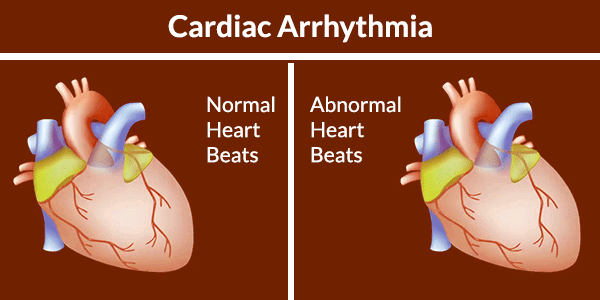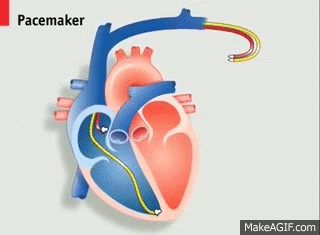

A pacemaker is a small electrical device that that helps those who have arrhythmias (as discussed in the leaflet the term means that your heart is beating too fast, too slow or irregularly) control their heartbeat so it beats at the correct speed. Other reasons why you could need a pacemaker could include that your heart is blocked by a delay in the bio-electric signals sent by the heart or your heart is beating out sync due to heart failure. There are three different types of pace makers including a : single chamber pacemaker, dual chamber pacemaker and a biventricular pace maker all of these have a different amount of electrodes. A single chamber has one whilst a dual chamber has 2 and biventricular pacemakers have 3. The diagram below shows heart arrhythmias.

A pacemaker is a relatively simple device to install compared to other surgeries so it only requires 1 day at the hospital usually overnight. A heart has a biological pace maker called a sinus node. The sinus sends out bioelectric signals at a fixed rate. A pacemaker will help the Sinus node send out the right signals at the right time. Pacemakers are installed under anaesthetic and only takes 1-2 hours of surgery, the rest of the day is recovering from anaesthetic and careful monitoring with extensive checks. Below is a diagram on how a pacemaker is installed.

LEGAL DISCLAIMER:This site is not an official NHS site; it is a homework project. Made from the code up by : Brijesh N. Savjani.